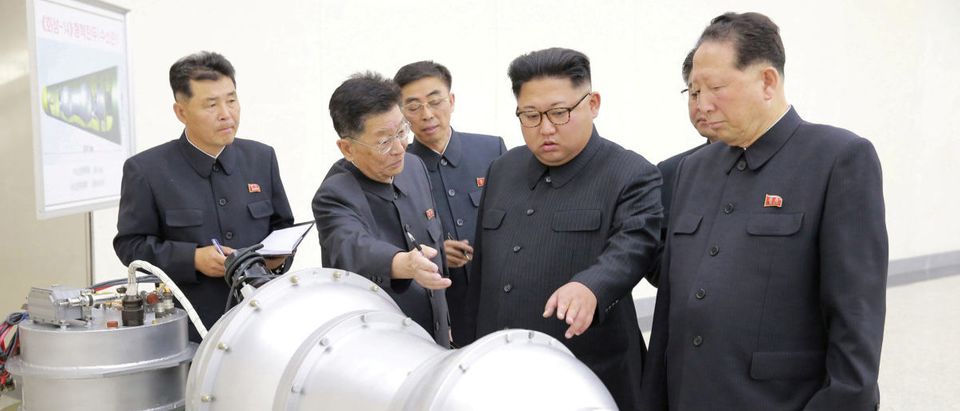North Korea’s recent test of a suspected hydrogen bomb may have irreparably destabilized the country’s nuclear test site.
South Korea detected another earthquake near the Punggye-ri nuclear test site in Kilju County, North Hamgyong Province Friday, the fourth since the country conducted its sixth and most powerful nuclear test early last month, reports the Associated Press, citing officials from South Korea’s Korea Meteorological Administration.
The officials, noting that the area is not particularly prone to earthquakes, suggested that the test of a suspected staged thermonuclear weapon on Sept. 3 potentially weakened the tectonic plate structures. North Korea has been testing nuclear bombs since 2006, but it was not until after the most recent test that the area began to experience frequent earthquakes.
North Korea’s test of a purported hydrogen bomb produced an explosive yield significantly larger than the atomic weaponry the country previously tested. The blast was so powerful that it literally moved mountains, and that seismic data compared to the previous tests was off the charts.
Expert observers noticed extensive tunneling in the months prior to the most recent test, with some suggesting that the tunnels could potentially support an explosive yield around 280 kilotons. Some analysts suspect North Korea’s latest nuclear test may have produced a yield in excess of 300 kilotons, although calculating yield is a challenge due to incomplete data, specifically depth.
Kune Yull Suh, a professor of nuclear engineering at Seoul National University, told the AP that another test at its current testing site could be “suicidal.” Suh worries that another powerful test could trigger a collapse or worse, such as a volcanic eruption nearby at Mt. Paektu. Some other experts have expressed similar concerns, arguing the rogue regime may not be able to use the Punggye-ri site for future testing.
With a damaged test site, another test runs the risk of radioactive contamination.
“The explosion from the Sept. 3 test had such power that the existing tunnels within the underground testing site might have caved in,” Kim So-gu, a senior researcher at the Korea Seismological Institute, told Reuters. “I think the Punggye-ri region is now pretty saturated. If it goes ahead with another test in this area, it could risk radioactive pollution.”
North Korea’s foreign minister, responding to President Donald Trump’s United Nations speech, suggested the regime could test a nuclear weapon in the Pacific, hinting at an atmospheric test, but it is questionable whether North Korea would take that step.
Send tips to ryan@
All content created by the Daily Caller News Foundation, an independent and nonpartisan newswire service, is available without charge to any legitimate news publisher that can provide a large audience. All republished articles must include our logo, our reporter’s byline and their DCNF affiliation. For any questions about our guidelines or partnering with us, please contact licensing@dailycallernewsfoundation.org.


